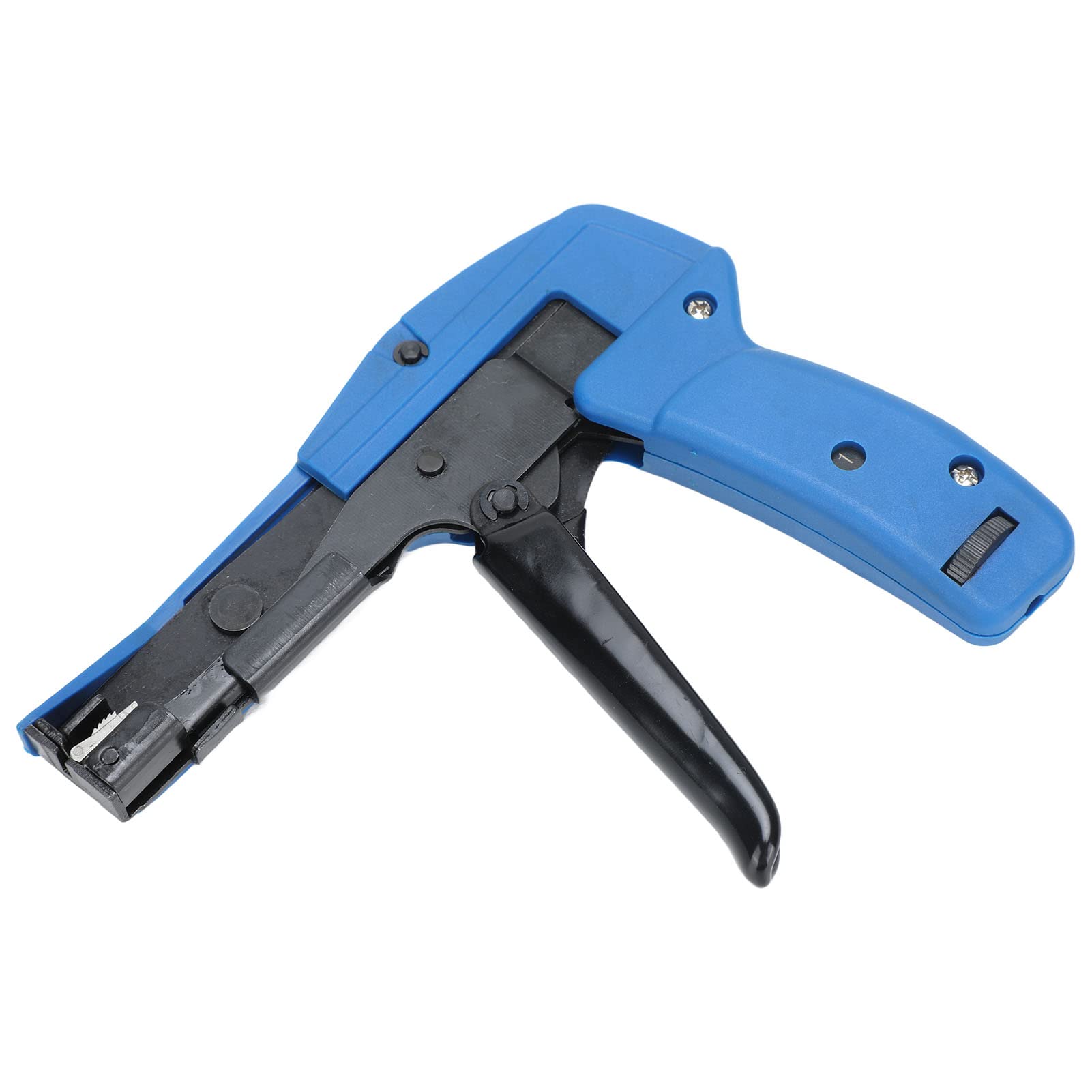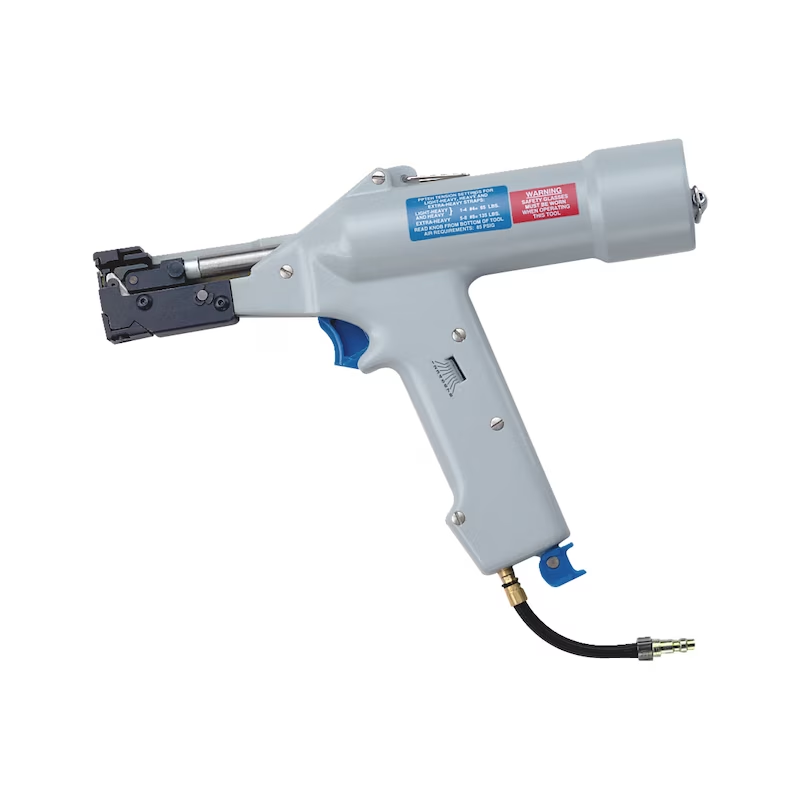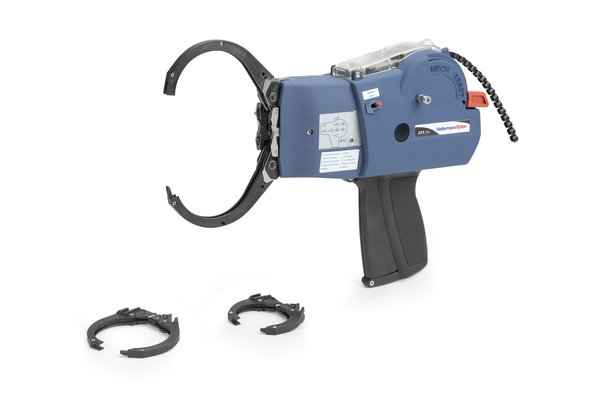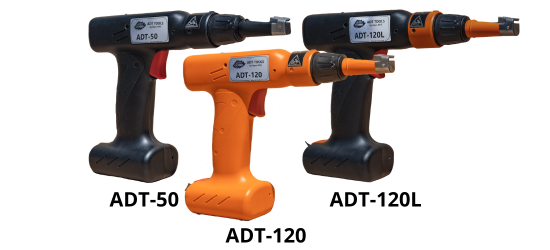How to choose your tightening tool
What are we those tightening tools used for?
Cable ties clamping tools are needed in industrial settings, when large quantities of cable ties are used daily. They can ease the operation thanks to a force setting, a better cut and less strength needed by the operator. It can therefore be found in truck assembly, railway or aerospace production or in medical equipment production.
Why using power tools?
When it comes to tightening plastic cable ties, you can find many different types of tool to help you with this repetitive tightening operation. Manual pliers are the most common, but you can also find pneumatic or electric tools. As you saw in one of our previous articles, each has its advantages and disadvantages.
Here's a summary of each type.
Manual clamp

Manual pliers are less expensive and relatively fast, but they are impractical for repeated operations, since the operator has to exert a great deal of force, which can lead to Musculoskeletal Disorders (MSD), in this case carpal tunnel syndrome. This condition is ultimately much costlier for both the company and the operator. The quality of tightening is also affected due to the unconsistency of strength applied.
Pneumatic clamp

Pneumatic clamps are less common and this is often due to the more complex installation and maintenance of the equipment. The operation can also be affected, on one hand the clamping quality can depend on air pressure, on the other hand the air hose forces the operator to work from a fixed station. Regarding health, the carpal tunnel syndrome is minimal since the force is provided by the tool, however MSDs at the elbow may be found due to the tool's stroke.
Automatic tool

Automatic tools are the least commonly used because of their costs and complexity to install, despite their advantages in terms of eliminating MSDs since the operator's effort is replaced by the electric tool. It also better the speed of the operation and its quality since there is no variation in strength applied. Unfortunately, the power cord restricts mobility and the cable ties hoop restricts access.
Portable power tool

Battery-powered tools are costlier eliminate MSDs thanks to the replacement of effort from the operator to the electronics and motorization. They also allow a better cut and repeatable tightening with control over it, as well as a quick operation. The portable tool combined with the narrower and rotating head allows a better access in narrower areas.
The range of battery-powered tools
Let's take a look at some of the battery-operated tightening tools that can help you improve your operation.

The ADT Tools brand offers 3 tools to suit different needs and uses. The distinction is made between the width of the head, which is the width authorised for the tie wrap, and the force offered by the tool. You may notice a difference in color between the tools. Black indicates a lesser width or force, while orange indicates a greater width or force.
ADT-50
The body and head of this tool are black, so it can be used with small or medium-width cable ties and offers a force adapted to these smaller tie wraps, which require less force.
ADT-120
Here, the body and head of the tool are orange, which means it is for use with medium to wide cable ties that require a lot of force to be tightened properly.
ADT-120L
This tool, the latest to be developed, has a black body indicating low force and an orange head for medium to wide tie wraps.
How do you choose the right tool for your needs?
As you've already seen, the tool you choose depends on the width of the cable ties you are using.
The thinner the cable ties, the less force is required to tighten them. The ADT-50 is therefore the tool to use.
The indications given for this tool are:
- For plastic cable ties from 2.5mm to 4.8mm (0.09-0.18 in) wide
- A tool force ranging from 65N to 250N (14.61 - 56.20 lbs) with 8 adjustment positions (estimated values)
For wider cable ties, however, more force is required, so the ADT-120 is to use.
The indications given for this tool are:
- For plastic clamps from 4.8mm to 7.6mm (0.18-0.30 in) wide
- A tool force ranging from 175N to 300N (39.34 - 66.77 lbs) with 2 adjustment positions (estimated values)
So why is there a tool for wide cable ties but at a low force?
The ADT-120L was developed in response to specific customer requirements. Wide tie wraps generally require a high tightening force (ADT-120) but when tighten on soft cables or pipes, these could be crushed, causing quality issues. It allows a tightening with less force for those wider zip ties.
The indications given for this tool are:
- For plastic clamps from 4.8mm to 7.6mm (0.18-0.30 in) wide
- A tool force ranging from 65N to 250N (14.61 - 56.20 lbs) with 8 adjustment positions (estimated values)
What about clamps exactly 4.8mm wide?
This is the width limit between the tools. The use of all 3 tools is possible, so it will depend on the tolerated force indicated by the cable tie manufacturer. If this is not known, it is preferable to try on the lowest position and increase if the tension is not sufficient.
Do you need any further information on tightening?
- To know whether the quality of the tightening is good, it is often defined by the cable tie being able to turn on the spot but not move along the cable.
- Cable ties have a maximum force that must not be exceeded - this is the elastic limit of the ties. If exceeded, deformation will occur and it will not be possible to cut it.
- Finally, if estimating the forces available for each tool is not enough to ensure the quality of the tightening, a measurement certificate can be produced for each new head.
To sum up, what should you look for?
- Define the type of tool best suited to the assembly/production.
- Check the width of your cable ties and the manufacturer's information on force.
- Check the tool that fits these values.
- Depending on the application, confirm according to the support that will be held if several tools can be used.
- Validate with a measurement certificate (in the case of a power tool) if necessary.


 Healthier and happier workforce
Healthier and happier workforce
 Improved Quality and Process
Improved Quality and Process